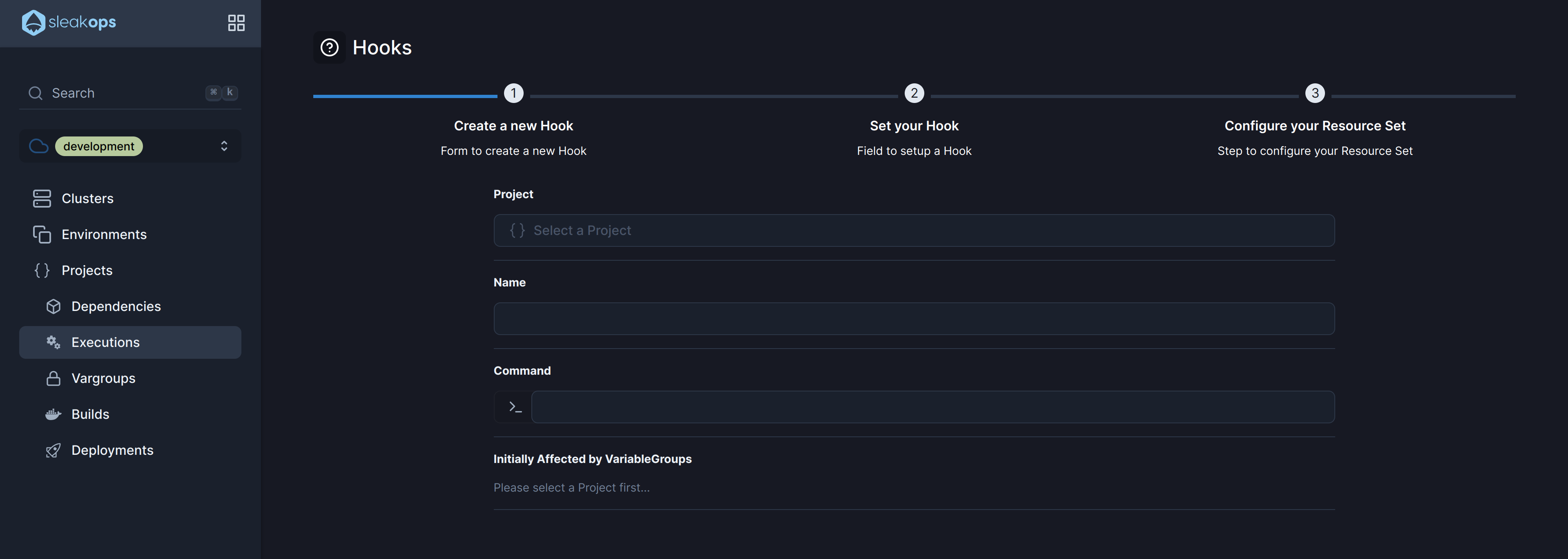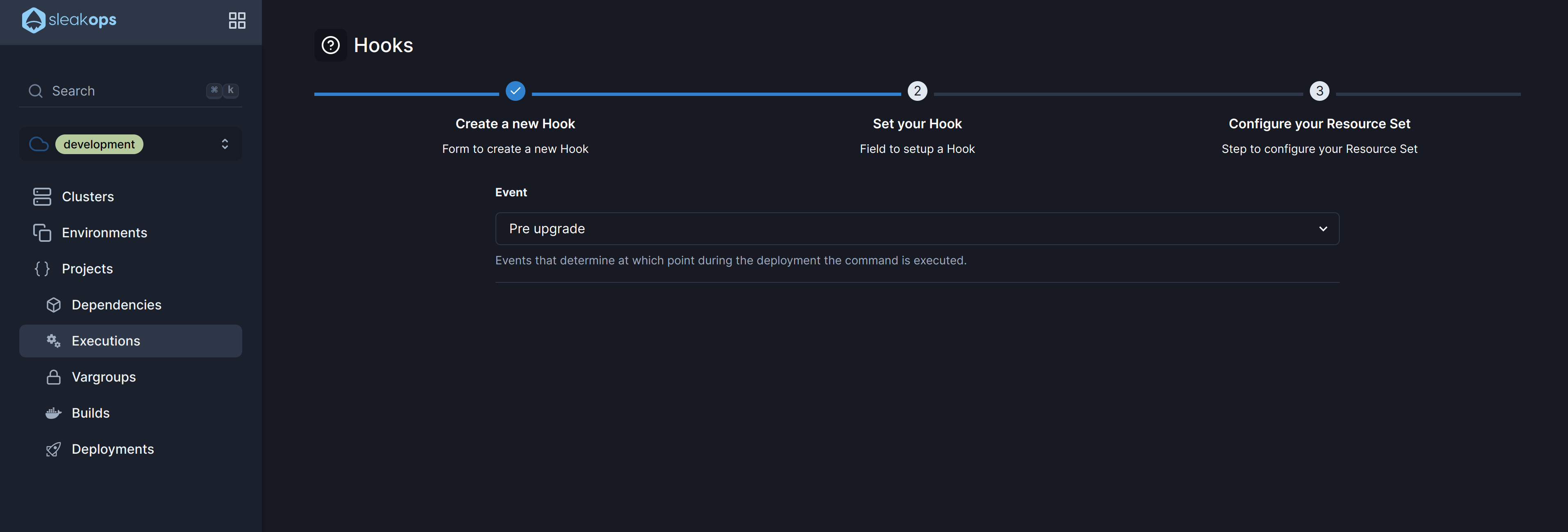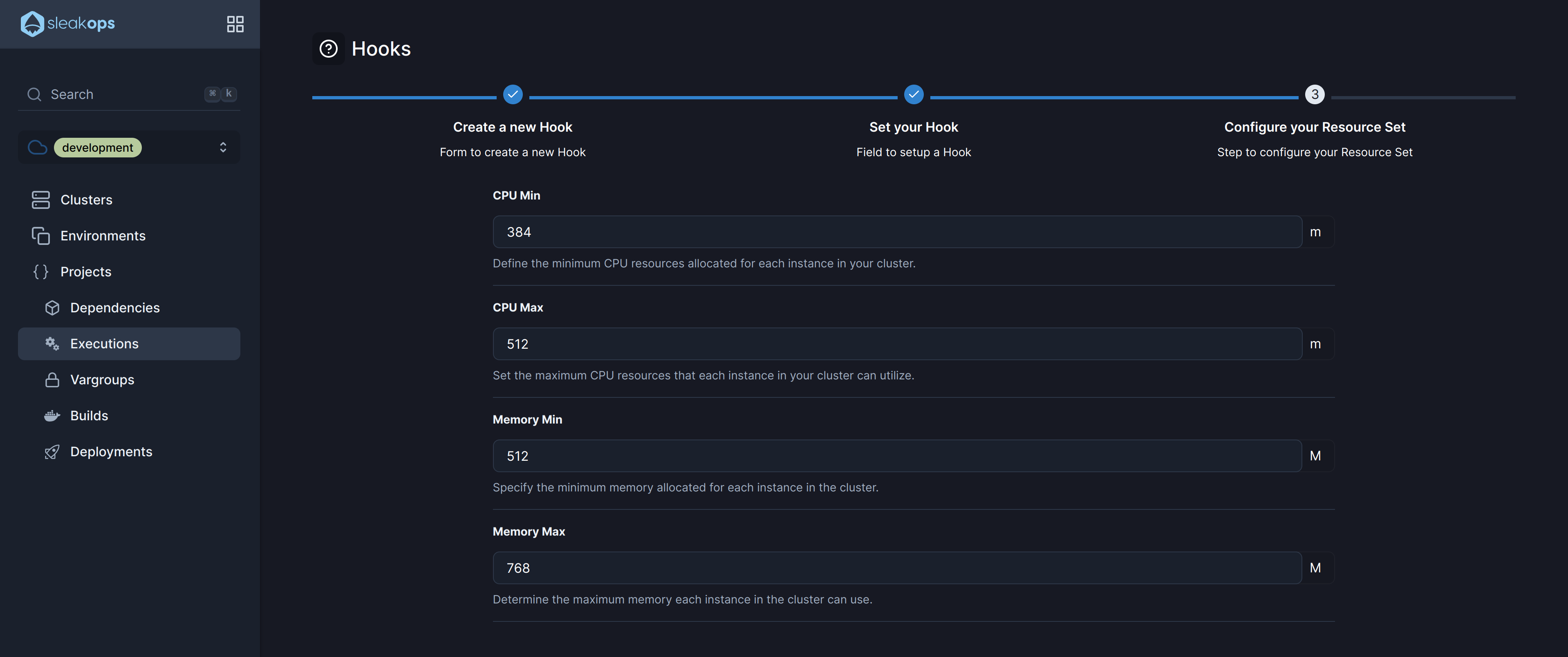Hooks
Hooks are tasks triggered by specific events during a deployment. For example, you can use Hooks to automatically run a database migration or collect statistics whenever a new version of your application is deployed. These tasks also run in pods, making it straightforward to troubleshoot by examining the logs.
If you want to learn more about hooks, click here.
FAQs
How can I configure memory and CPU settings for my Hook?
You can configure the CPU Min and CPU Max values to set the minimum and maximum CPU resources each instance in your cluster can use. Similarly, you set Memory Min and Memory Max for memory allocation per instance.
Lets add a Hook for your Project
1. Navigate to create Hook section
Into the Left Pane, access Executions. Then select the Hook tab and then, at the top right corner, click on the Create button.

2. Select a Project and a Name for the hook
Start with the basic information, complete these attributes and click Next to continue.
| Attribute | Description |
|---|---|
| Name | Identify your web service. |
| Project | Select between the existent projects. |
| Command | The command that runs the service. |
Once those attributes are completed, click the Next button to move forward.

3. Define the deploy event
Select when your hook will execute and click Next.
| Attribute | Description |
|---|---|
| Event | Define when execute the hook. Check available events |

5. Finish the set up
This step outlines the key attributes for configuring the resources of a Hook in SleakOps, allowing for flexible management of CPU, memory, and scaling behaviors.
| Attribute | Description |
|---|---|
| CPU Min | The minimum amount of CPU resources allocated for each instance in the cluster. This ensures that each instance always has this amount of CPU available. |
| CPU Max | The maximum CPU resources that each instance in the cluster can use. This cap helps prevent any single instance from consuming too much CPU. |
| Memory Min | The minimum amount of memory allocated for each instance in the cluster. This guarantees that the instance has enough memory to operate efficiently. |
| Memory Max | The maximum amount of memory each instance in the cluster can utilize. It limits the memory usage to prevent any single instance from overconsuming resources. |

Submit to create and Deploy your hook.